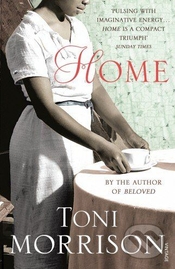Take Me Home
I first came across Toni Morrison a few years ago when I read Beloved, a book that positively blew me away.  Although I haven’t read anything else by her since, picking up Home when I noticed it on sale was a no-brainer. I didn’t realize my copy of the book came out of the printer’s cut crooked, but I think it adds to the experience.
Although I haven’t read anything else by her since, picking up Home when I noticed it on sale was a no-brainer. I didn’t realize my copy of the book came out of the printer’s cut crooked, but I think it adds to the experience.
This book definitely succeeded in shocking me, someone who considers themselves a fairly well-informed European Americanophile. While I’ve read non-fiction literature like the maddeningly complacent Up From Slavery by Booker T. Washinton as well as Letter from Birmingham Jail by Martin Luther King, it still failed to register with me just how persistent such attitudes were across the entire country. Segregation was not just a southern thing. This isn’t something I grasped from, say, Pynchon’s V., which I’d argue draws attention away from the racial and social problems in order to focus on some kind of crisis of modernity. I bring this up because the PTSD-suffering protagonist sees “black flames shooting out of the V” of the logo of a Chevron station. Morrison clearly isn’t Pynchon, but when your nose is singing from being pushed into flamey V-related imagery you can’t help but make a connection.
The interaction between the global narrator and the Frank narrator is interesting, but I shouldn’t spoil it. If you’ve read Beloved you kind of know the shtick, but it’s different enough not to feel like repetition. In brief, Home is a story of broken people jerkily healing themselves, overcoming not only their shattered selves but also the malfunctioning society that made them. Recommended.
Toni Morrison (2012), Home.
★★★★
Permalink CommentsTags: American, literature, review

